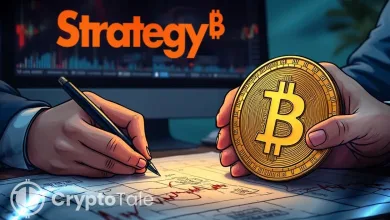How to Create and Launch Your Own Cryptocurrency in 2025

Entrepreneurs have seen an explosion of digital currencies over the past decade. In 2024, more than 20,000 different cryptocurrencies existed, yet only a fraction gained lasting traction because they solved real problems.
With continued growth projected for 2025 and beyond, attention has turned to how new entrants can create and deploy their own coins or tokens effectively. Understanding the technical, legal, and economic steps involved is crucial for anyone considering this venture.
Purpose, Strategy, and Platform Choice
A successful digital currency begins with a clear purpose. Industry analysts argue that projects should address a specific need rather than simply chase speculative profiteers. Defining the problem a currency aims to solve, the community it will serve, and whether it functions as a utility token, governance mechanism, or store of value gives the project direction. This planning stage should produce a mission statement and outline realistic goals. Without a unique value proposition, a new currency risks getting lost in a crowded market.
Tokens themselves come in several forms, and knowing which to issue matters. The main categories include:
- Utility tokens – digital assets designed to grant access to specific services or features within a blockchain ecosystem. They empower users by acting as keys that unlock functions and incentivize participation.
- Security tokens – digital assets that represent ownership rights or a slice of value in an asset or company. They are created through tokenization and must comply with securities regulations.
- Governance tokens – tokens that give holders the right to vote on proposals shaping a decentralized platform’s rules and budget; voting power is proportional to the number of tokens held.
Understanding these categories helps developers choose a token model aligned with their project goals.
Another strategic decision is whether to issue a token on an existing blockchain or build a native coin on a new network. Coins such as Bitcoin or Litecoin run on their own chains and offer maximum design flexibility. However, creating a new chain requires a team of developers familiar with consensus algorithms, cryptography, and distributed networking, plus ongoing maintenance.
Tokens, by contrast, operate on established networks like Ethereum or Solana and inherit the security and infrastructure of those platforms. This option allows entrepreneurs to focus on token functionality rather than building core protocol layers. Tokens are also cheaper and faster to launch, making them popular for startups.
Choice of platform influences performance, security, and development complexity. Ethereum uses proof of stake and supports rich smart‑contract functionality, while Binance Smart Chain offers low fees and fast confirmations.
Solana’s proof of history enables high throughput, and Polkadot provides interoperability between chains. Project teams should evaluate transaction costs, scalability, programming languages, and community size to find the best fit. A network’s existing ecosystem of decentralized applications or developer tools can also influence adoption.
Projects must also consider whether to fork an existing blockchain or use no‑code services. Forking modifies the open‑source code of a chain, such as Bitcoin or Ethereum, to create a new network with unique parameters.
This route requires technical knowledge and subsequent auditing but allows for innovation. No‑code platforms can generate ERC‑20 tokens with minimal programming experience, yet they offer limited customization and may lack advanced features. Both approaches underscore the trade‑off between control and accessibility.
Building the Architecture: Consensus, Development, and Security
Once the purpose and platform are defined, attention turns to the design of the blockchain architecture. Each network operates according to a consensus mechanism that governs how participants validate transactions.
Proof of work, used by Bitcoin, is secure but energy‑intensive, while proof of stake and delegated proof of stake offer improved scalability and energy efficiency. Projects can choose from these established protocols or explore hybrid models. The mechanism chosen affects transaction speed, security, and the ability to implement features like staking rewards.
Developers then design tokenomics, deciding on the total supply, issuance schedule, and distribution model. A well‑planned economy ensures that tokens remain scarce enough to retain value while providing incentives for users to participate.
The Cubix guide recommends determining the initial allocation among public sales, team members, advisers and reserves and drafting a distribution timeline. Designing the name, symbol and decimal precision of the token is also part of this phase. Projects that build new chains must configure nodes, establish block parameters and decide whether the network is public, private, permissioned, or permissionless.
Coding the currency logic requires proficiency in languages compatible with the chosen network. Ethereum uses Solidity, while Solana developers often choose Rust or C. Tools like Truffle Suite, Remix IDE and Hardhat assist with writing, testing and deploying smart contracts.
Token standards such as ERC‑20 for Ethereum, BEP‑20 for Binance Smart Chain and SPL for Solana specify how tokens should behave and ensure compatibility across wallets and exchanges. Compliance with these standards facilitates interoperability and streamlines development. Regardless of the approach, smart contracts act as the “brain” of a cryptocurrency; they automate transactions and enforce governance rules. Experts advise thoroughly testing contracts in private and public test environments before deploying to mainnet.
Security is central to any cryptocurrency project. Billions of dollars have been lost due to vulnerabilities in poorly audited code. Professional audits identify reentrancy attacks, logic flaws and inefficiencies before launch.
Multi‑signature wallets, which require multiple approvals for transactions, reduce the risk of a single compromised key. Continuous monitoring tools and regular updates patch newly discovered issues. Testing should simulate real‑world conditions, including high transaction volumes and malicious attacks. A robust security strategy not only protects users but also builds confidence in the project.
Development budgets vary widely depending on project scope. Apptunix estimates that creating a basic token on Ethereum or BSC costs between $8,000 and $15,000, while launching a custom token with a wallet and website can cost $15,000 to $30,000. Building a full blockchain ecosystem ranges from $50,000 to $150,000 or more.
Cost components include platform setup, smart‑contract development, wallet integration, security audits, legal compliance, and marketing. Entrepreneurs can save by using open‑source frameworks and white‑label solutions, but should invest in areas like smart‑contract security and regulatory compliance.
Typical cost components include:
- Blockchain platform setup – estimated at $3,000 to $15,000, depending on whether a new chain is created or an existing one is used.
- Token and smart‑contract development – from $5,000 to $20,000; complexity and platform choice affect cost.
- Crypto wallet integration – $2,000 to $8,000 for web, desktop or mobile wallet integration.
- Security audits – $5,000 to more than $30,000; external audit firms identify vulnerabilities.
- Legal and regulatory setup – $10,000 to $50,000 for KYC/AML implementation, licensing and compliance.
- Marketing and community building – $3,000 to $20,000 or more; includes social campaigns and influencer partnerships.
- Ongoing maintenance – $2,000 to $5,000 per month for node support, patches and upgrades.
Entrepreneurs can save by using open‑source frameworks and white‑label solutions but should invest in areas like smart‑contract security and regulatory compliance.
Compliance, Launch and Community Engagement
Navigating regulatory frameworks is a key part of deploying a digital currency. Jurisdictions differ in how they classify tokens—as utility, security or payment instruments—and impose varying requirements. Projects must implement know‑your‑customer (KYC) and anti‑money‑laundering (AML) procedures where required and ensure that token sales do not violate securities laws.
Legal advisers help determine whether the token needs to be registered with regulators and which licenses are necessary. Security tokens must comply with securities regulations, while utility or governance tokens may face lighter oversight. Compliance is not optional; failure to follow local rules can result in fines or forced shutdowns.
Once legal groundwork is laid, the launch phase begins. A comprehensive whitepaper should outline the project’s vision, technical architecture, tokenomics and roadmap. Depending on the strategy, tokens may be distributed through an initial coin offering (ICO), initial DEX offering (IDO), crowd sale or airdrop.
Apptunix notes that IDOs, which launch tokens on decentralized exchanges, are gaining popularity because they lower entry barriers for investors. Listing the token on price‑tracking sites like CoinMarketCap and on exchanges enhances visibility. Distribution models should avoid perceptions of unfairness; airdrops that reward early supporters can help build trust. Once legal groundwork is laid, the launch phase begins. Key tasks include:
- Prepare a detailed whitepaper – outline the project’s vision, technical architecture, tokenomics, and roadmap.
- Select a distribution method – choose between an initial coin offering (ICO), initial DEX offering (IDO), crowd sale or airdrop to issue tokens.
- List the token – add it to price‑tracking sites like CoinMarketCap and register on exchanges to enhance visibility.
- Plan equitable distribution – use mechanisms such as airdrops or community rewards to avoid perceptions of unfairness and to build trust.
Apptunix notes that IDOs, which launch tokens on decentralized exchanges, are gaining popularity because they lower entry barriers for investors.
Marketing and community building are essential for long‑term success. Active engagement on social media platforms such as X (formerly Twitter), Reddit and Telegram can increase token visibility by up to 300 percent during early stages. Hosting ask‑me‑anything sessions, posting progress updates and responding to community feedback foster loyalty.
Partnering with influencers and attending blockchain conferences can expand the project’s reach. According to Apptunix, projects that collaborate with trusted influencers see up to seven times higher engagement than those relying solely on traditional advertising. A vibrant community not only supports the token but also contributes to decentralized governance and further development.
After launch, continuous maintenance ensures that the currency remains functional and relevant. Developers may upgrade consensus mechanisms, add features or migrate to layer‑two scaling solutions to improve performance.
Regular updates keep the community engaged and signal that the project is evolving. Ongoing maintenance includes patching security vulnerabilities, managing node infrastructure and supporting user wallets. Without sustained effort, even promising cryptocurrencies can stagnate in a rapidly changing market.
Creating and deploying a cryptocurrency is a complex undertaking that blends technology, economics and law. A clear purpose, informed platform choice and thoughtful tokenomics lay the foundation. Robust development practices and security measures protect users and investors.
Compliance with regulatory requirements and transparent launch strategies build credibility. Finally, active marketing and community engagement sustain growth and adaptation. While anyone can technically issue a token, long‑term success requires careful planning, skilled execution and continuous commitment to innovation and governance.




